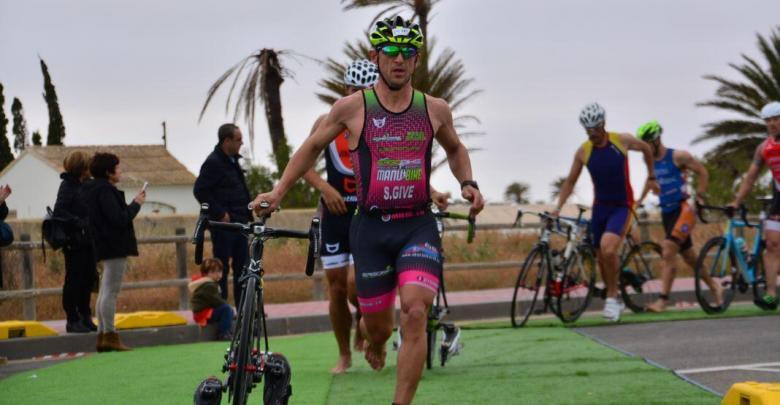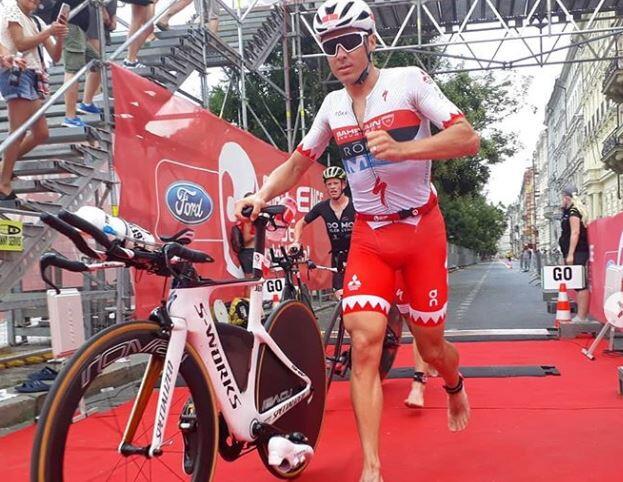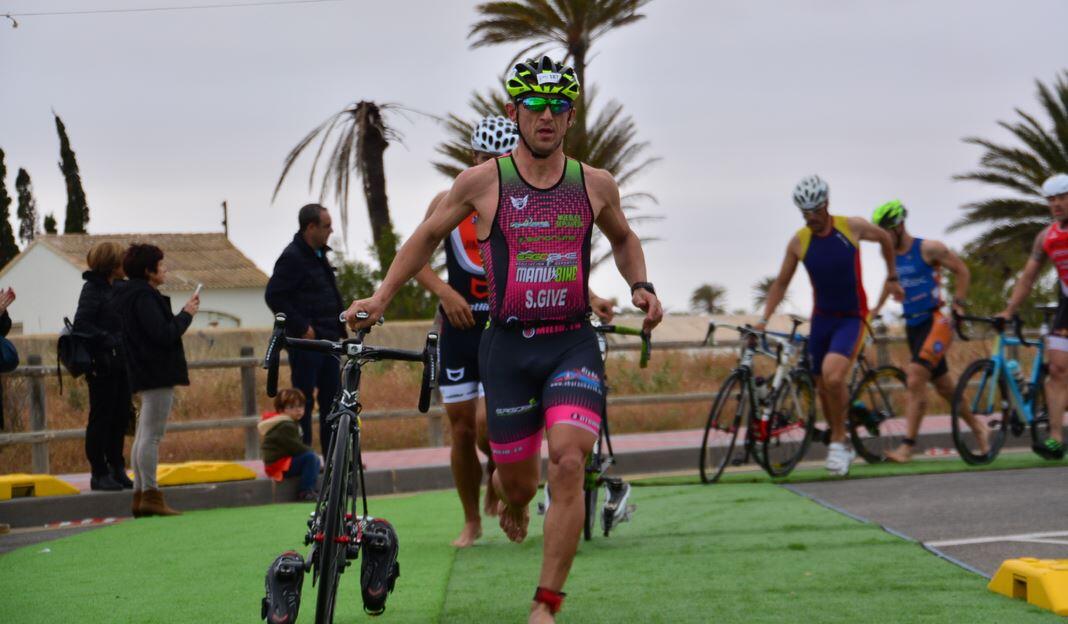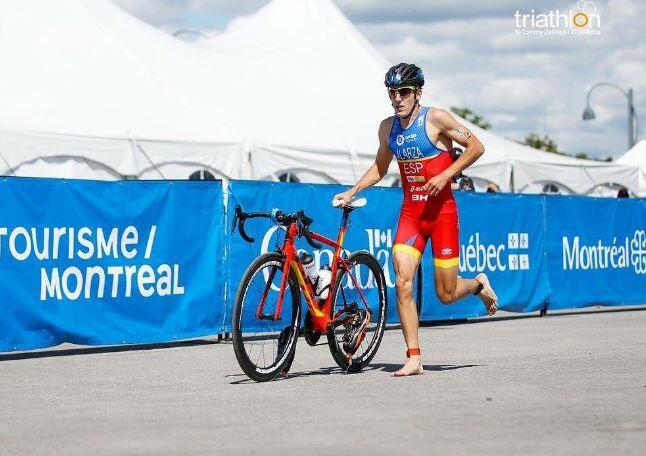How to train the different transitions in the triathlon?
The training of transitions is the great forgotten by the triathletes

In this article our collaborator Personal Running tells 5 tricks so that in the race you lose as little time as possible in the transitions in a triathlon:
REMOVE THE NEOPRENE:
In races where we use neoprene, it's important not to waste time in the T1 taking it away from us For this, it is important to practice on the beach, swamp or even in the pool in the following way:
The first thing we must do once we touch land es completely unzip the back zipper, remove one arm, then the other, and lower it to waist height. So we would continue our way to the box.
Once in front of the box, is when we remove the hat and glasses so that we do not hinder the previous maneuver. Once in the box, we must put hat and glasses in the box and perform two energetic pullss, dry and fast down.
The first pull will leave the neoprene at knee level, the second almost in the ankle. This is where I must perform a strong knee lift pulling up while the opposite foot steps on the neoprene. Then we would do the same with the other leg. If after these maneuvers we have not managed to get out, is when we would put one or two fingers to finish to remove it.

RISE ON THE BIKE:
It is a technique that must be mastered. In the T1 we should not waste time putting on our shoes, running with the coves, stopping and getting on the bike from standing. The fastest way is to get up and running with the slippers on the pedalss. For this it is convenient in the first place practice the "jump" to the bike de the following way:
Find yourself a wide straight line, flat or with some favorable slope and without traffic. Run running the bicycle with your favorite hand always holding it by the saddle. When you have traveled approximately 20-30m, you can grab the bicycle by the handlebar with both hands, once there, load the weight on the foot on the opposite side to the bicycle and at the time that you take impulse with that foot, pass the opposite leg over the saddle.
The secret to not getting hurt is that First, support the inner part of the thigh and later the rear seat sits in the saddle. If we try to do it first abruptly it is possible that we hurt ourselves and even split the seatpost.
PLACE THE SHOES IN THE PEDALS WELL:
So that the Sneakers stay fixed to the pedals, static and parallel to the ground it is necessary to put elastic rubber bands. For this, the shoe must be specific triathlon, because this type of shoe has a support on the back to tie the rubber.
Normally, the rubber of the shoe on the side of the change is tied to the front derailleur or even to the bottle cage. The rubber on the opposite side usually goes to the closure of the rear wheel.

PUT YOUR FEET INSIDE THE BIKE SNEAKERS:
Once we are on the bike and have achieved some inertia, it is importantand practice the technique of putting your feet in your shoes.
For this, without hurry but without pause, I must look down, point with the tip of the fingers towards the opening of the shoe and introduce them with a rapid and simultaneous movement. Once the two feet are inside them, we would start pedaling so as not to lose inertia, at the time that we are finishing to fasten them.
LOWERING THE BIKE IN PROGRESS:
After having traveled a few meters with the shoes well fastened, we would proceed to perform the opposite maneuver simulating the entry into the T2.
To do this, start undo the zippers as you pedal. Then take out the feet and put them on of them to carry out the last approach pedals up to the clearing line. The last step is to get off. Support the weight on your preferred leg, going behind the saddle the opposite leg gripping the handlebar strongly with both hands.
Once both legs are at the same height and slow down, we would put We will continue to run to the box, holding the bike back in the saddle with one hand. The first foot that we always support is the opposite to the support foot, that is to say, that of the leg that we have passed behind the saddle.

ELASTIC CORDS ON THE SNEAKERS:
It is key to use elastic cords and not the conventional ones, since we would lose a lot of time in tying them up. Practice at home how to put your feet fast and regulate yourself the strength of the cord finding the middle point where you can get your foot well and in turn not too loose to run. If we use talcum powder and spread it over the template, it will cost less to enter at the bottom.
Lastly and generally, the best advice we can give is that Do not wait for the race to practice or experience these things. This should be well rehearsed at home and we should only do what we have the security to execute correctly.
More information about Personal Running on your website: http://personalrunning.com/web/
Photo: ITU, Personal Running
There are no previous results.




























